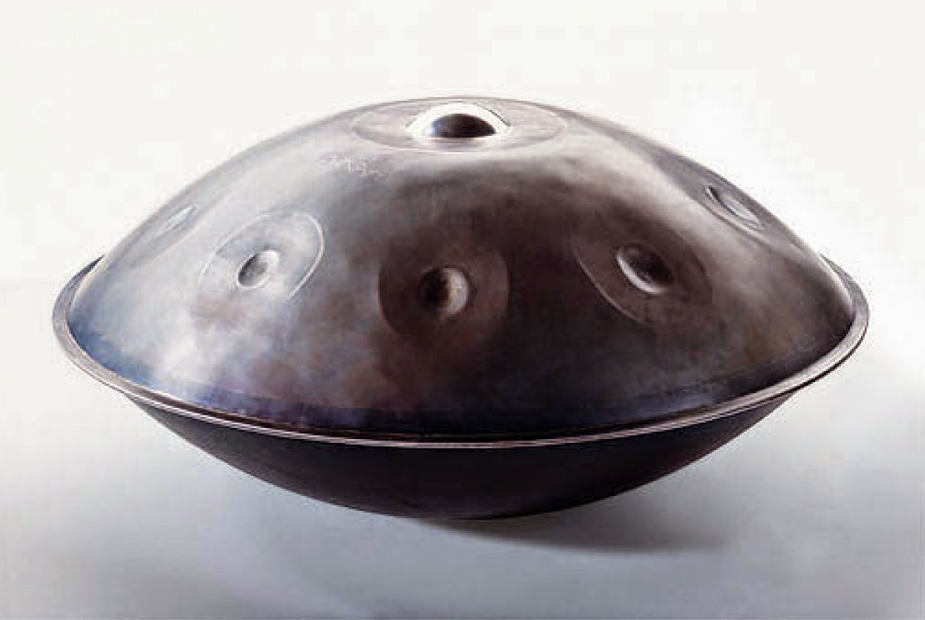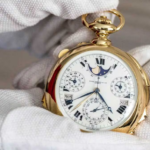
In the grand orchestra of human creativity, music holds a place of honor, a universal language that transcends borders and unites hearts.
But amidst the familiar chords of guitars, the gentle hum of the violin, and the triumphant blast of trumpets, there lies a lesser-known section. This is the domain of the bizarre, the unique, and the utterly fascinating world of weird musical instruments.
From the depths of history and the farthest reaches of human imagination, inventors and musicians have crafted instruments that challenge our perceptions of what music can be.
In this article, we delve into the heart of musical eccentricity, exploring instruments that are not only a feast for the ears but a marvel for the eyes and the imagination.
The Great Stalacpipe Organ: Music from the Depths
Nestled in the Luray Caverns of Virginia, the Great Stalacpipe Organ takes the crown as the largest natural musical instrument.
Created by Leland W. Sprinkle in 1954, this leviathan turns the ancient stalactites of the cavern into musical notes. By carefully selecting stalactites spread over 3.5 acres and equipping them with rubber mallets, Sprinkle connected them to a traditional keyboard.
The result is a hauntingly beautiful sound that resonates through the underground chambers, a literal concert hall carved by nature and refined by human ingenuity.
The Theremin: Touching Sound
Invented in 1920 by Russian inventor Léon Theremin, the Theremin is an electronic instrument controlled without physical contact.
The musician plays the Theremin by moving their hands near two metal antennas, which control pitch and volume.
The resulting sound is eerie and has been used in movie soundtracks and by bands seeking a unique sound. It stands as a testament to human creativity, bridging the gap between science and art.
The Vegetable Orchestra: Fresh Sounds
Perhaps the most perishable entry on our list, the Vegetable Orchestra consists entirely of instruments made from fresh vegetables.
Founded in Vienna in 1998, this ensemble carves out flutes from carrots, trumpets from bell peppers, and drums from pumpkins. After each performance, the instruments are either eaten or composted, making this perhaps the most eco-friendly orchestra in existence.
Their music is not only a testament to sustainability but a reminder of the beauty in the transient and the mundane.
The Sea Organ: Melodies of the Tide
Situated on the shores of Zadar, Croatia, the Sea Organ is an architectural sound art object that transforms the Adriatic Sea’s waves into music.
Designed by architect Nikola Bašić in 2005, the sea organ consists of a series of tubes and a resonating cavity that are played by the sea’s ebb and flow.
This instrument marries the randomness of nature with human design, creating an ever-changing symphony that speaks of the eternal dialogue between land and water.
The Pyrophone: Fire Music
The Pyrophone, or fire organ, is an explosive entry into the world of musical oddities.
Invented in the 19th century, it generates sound through the combustion of fuel gases, creating not only music but a visual spectacle of flames and sparks.
Played similarly to a church organ, it’s a literal example of playing with fire. The Pyrophone’s dramatic presence reminds us of the primal power of the elements and their potential for beauty.
The Hang: A Modern Marvel
In the realm of weird musical instruments, the Hang stands out as a modern marvel.
Invented in the year 2000 by Felix Rohner and Sabina Schärer in Switzerland, the Hang (pronounced “hahng”) resembles a UFO but produces sounds reminiscent of a steel drum, yet with a more ethereal quality.
This instrument is played with the hands and fingers, tapping the surface to create a range of tones. Its unique sound, a blend of bells, gongs, and harps, has captivated musicians and audiences worldwide, making it a sought-after instrument in the music world.
The Hang’s creation marked a significant moment in musical innovation, combining traditional craftsmanship with contemporary design to produce an entirely new acoustic experience.

The Glass Armonica: The Sound of Purity
Benjamin Franklin, known for his contributions to science and politics, also left his mark on the world of music through the invention of the Glass Armonica in 1761.
Inspired by the sounds produced by running a wet finger around the rim of a wine glass, Franklin designed a series of glass bowls of different sizes, mounted on a spindle and played by touching the rims with wetted fingers. The instrument produces a hauntingly pure tone, which enchanted listeners in the 18th century and continues to do so today.
Despite its initial popularity, the Glass Armonica fell into obscurity, partly due to rumors about its supposed health hazards. Nonetheless, its unique sound still finds a place in certain classical and contemporary compositions, embodying the ethereal intersection of science and art.
The Didgeridoo: Ancient Resonance
Originating from the Indigenous peoples of northern Australia over 1,000 years ago, the Didgeridoo is one of the world’s oldest wind instruments.
Traditionally made from hollowed-out eucalyptus trunks, its deep, resonant sound is produced by a technique known as circular breathing, allowing continuous play over extended periods.
The Didgeridoo is deeply embedded in the cultural traditions and ceremonies of its native people, symbolizing the spiritual connection between humans and the natural world. In recent years, its distinctive drone has been embraced by a wider audience, finding its place in modern music genres and therapeutic practices, illustrating the timelessness of its sound and cultural significance.
The Singing Ringing Tree: A Sculptural Symphony
In the Pennine mountain range of England stands a remarkable fusion of art and music: the Singing Ringing Tree.
This wind-powered sound sculpture, completed in 2006, is shaped like a tree and made of galvanized steel tubes. As the wind passes through, it produces a chorus of haunting tones, varying with the wind’s strength and direction.
The Singing Ringing Tree is a testament to the potential of blending natural forces with human creativity to generate an ever-evolving auditory experience. It challenges our perceptions of what an instrument can be, merging sculpture, environment, and sound into a single, dynamic entity.
The Waterphone: Sounds of the Aquatic
The Waterphone is an unusual instrument that produces otherworldly sounds, often used to evoke mystery and suspense in film soundtracks.
Invented by Richard Waters in the late 1960s, the Waterphone consists of a stainless steel resonator bowl with bronze rods of different lengths and diameters around the rim.
Water is added to the bowl to create ethereal vibrato effects when the rods are played with a bow or mallet. The Waterphone’s haunting timbre is as fluid as the element it’s named after, capable of creating an array of sounds from gentle droplets to the powerful roar of the ocean, showcasing the innovative ways in which water and metal can be harmonized to produce music.
The Otamatone: A Modern Quirk
The Otamatone may be one of the most whimsical instruments to emerge in recent times.
Invented in Japan by the Cube Works Company, it resembles a musical note with a cute face and produces sound when its stem is squeezed while the head is touched.
The Otamatone’s sound is electronic, with a pitch that can be altered by pressing on its stem, making it both a musical instrument and a toy. It has gained international popularity not just for its unique sound and playful design but also as a symbol of the joy and creativity inherent in music.
The Otamatone challenges our conventional views on musical instruments by combining sound, touch, and visual art into a single, interactive experience.
The Nose Flute: Breath of Harmony
The Nose Flute, though less known in the concert halls, carries with it a rich cultural heritage.
This simple instrument, played by breathing air through the nose, has variations found in many cultures around the world, from the Pacific Islands to the indigenous tribes of North America. The sound produced is surprisingly melodious and soft, controlled by the modulation of breath and movement of the fingers over the holes.
The Nose Flute’s simplicity belies its ability to convey a wide range of emotional tones, from the playful to the solemn. It serves as a reminder that music can spring from the most basic human actions and materials, connecting us to the natural rhythms of breath and life.
The Crwth: Echoes from the Past
The Crwth, pronounced “cruth,” is a bowed lyre that dates back to medieval times, primarily used in Wales.
This ancient instrument, with its six strings and rectangular wooden body, occupies a unique place in the history of music. Played by bowing or plucking the strings, the Crwth produces a sound that is rich, resonant, and deeply connected to the Celtic musical traditions.
Although it fell out of common use by the 18th century, the Crwth has experienced a revival in recent years among musicians interested in historical and traditional Celtic music. Its enduring presence speaks to the timeless appeal of music that connects us to our history and heritage.
The Wheelharp: The Orchestra at Your Fingertips
The Wheelharp is a relatively recent invention that allows a musician to simulate the sound of a full string orchestra with a single instrument. It operates on the principle of a rotating wheel that bows the strings when the keyboard is played, similar to the way a violin’s bow produces sound from strings.
The result is a lush, cinematic sound that can range from the delicate pizzicato to the full sweep of orchestral resonance.
Invented in the 21st century, the Wheelharp represents the fusion of historical instrument design with modern innovation, offering musicians a new realm of expressive possibilities.
The Harpejji: Striking a Chord Between Worlds
The Harpejji, a mesmerizing blend of piano, guitar, and harp, emerges as a modern marvel in the realm of musical instruments, captivating the imagination of musicians and listeners alike.
Invented in 2007 by Tim Meeks, founder of Marcodi Musical Products, the Harpejji is designed to bridge the gap between stringed and keyboard instruments, offering a unique playing experience that combines the techniques of tapping with the layout of a keyboard.
This instrument features a flat, rectangular surface with strings stretched across it, and it is played primarily by tapping the strings with the fingers, a method that allows for a wide range of expressive possibilities.
The layout facilitates the playing of chords and melodies simultaneously, much like a piano, while also providing the vibrato and bending capabilities of a guitar.
Its sound is rich and versatile, capable of producing deep bass lines, intricate chords, and soaring melodies, all within the reach of the musician’s fingertips.

Epilogue: The Endless Orchestra of Imagination
The exploration of the world’s weirdest musical instruments uncovers the limitless imagination of humans in their quest to express, communicate, and connect through music.
These instruments, from the ancient echoes of the Didgeridoo to the modern innovations of the Hang, exemplify the diversity and creativity inherent in the human spirit. They challenge us to rethink the boundaries of music and the methods of its creation, inviting us into a broader, more inclusive understanding of sound.
As we continue to invent and discover, the symphony of strange instruments grows, each new creation adding its voice to the chorus of human expression. These instruments are not mere novelties but bridges between cultures, disciplines, and ideas, echoing our collective curiosity and our relentless pursuit of beauty in the most unexpected places.
In celebrating the weird, the unusual, and the utterly unique, we acknowledge the vastness of human creativity and the endless possibilities that await in the world of music.
Let us keep our ears open to the sounds of the unknown, for in them, we might just find the future of musical expression.

